Examining the Use of Norwalk's Industrial Waterfront
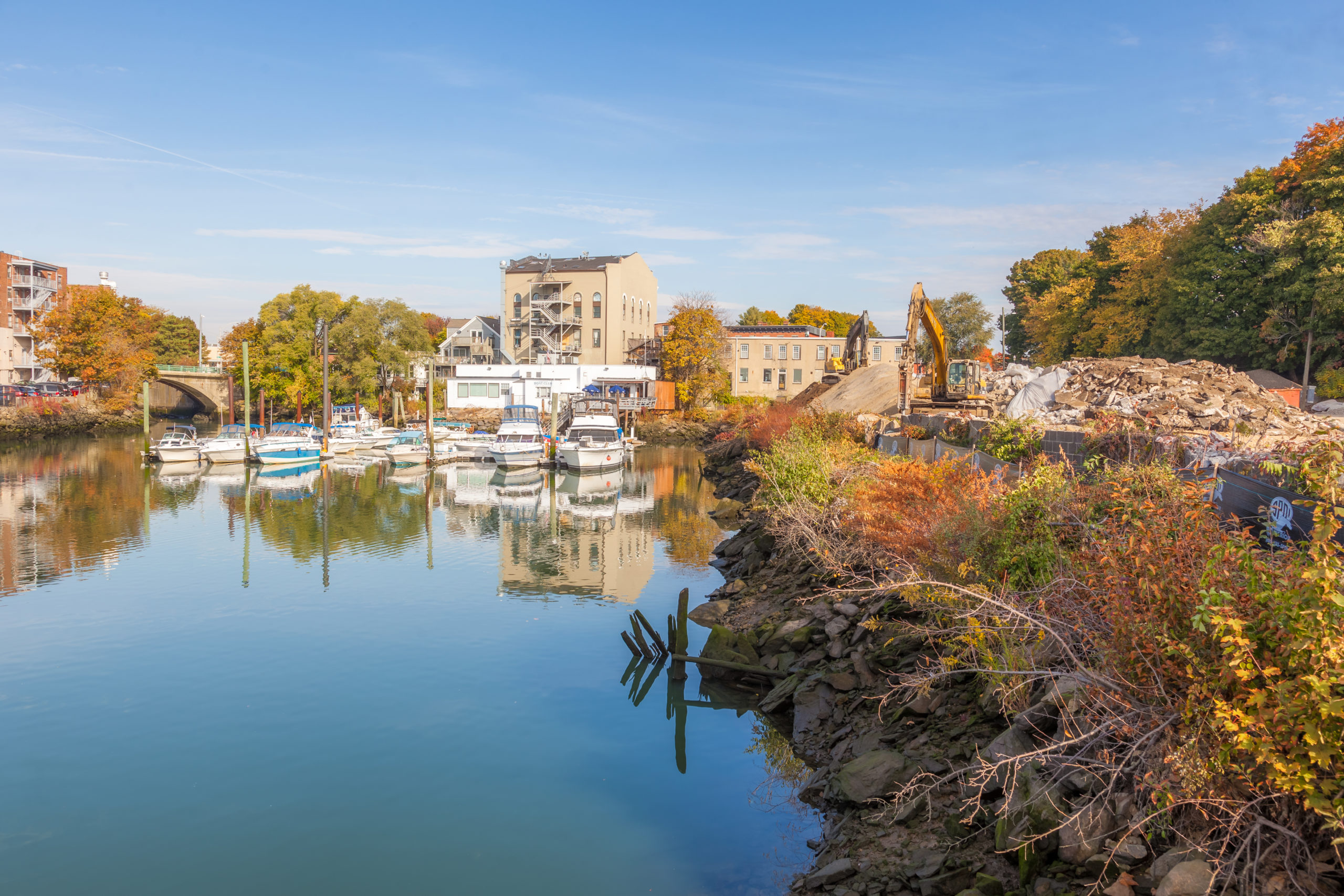 A beautiful city located on the Long Island Sound, Norwalk, CT has several photo worthy, waterfront destinations like the Maritime Aquarium or Calf Pasture Beach. These are great area attractions and unique spaces, but there are other waterfront areas, notably along the Norwalk River, that have historically been used for industry and other commercial purposes.
Norwalk is undergoing an assessment of the use of Norwalk’s industrial waterfront to determine what may be in store for the area. Read on to learn more.
A beautiful city located on the Long Island Sound, Norwalk, CT has several photo worthy, waterfront destinations like the Maritime Aquarium or Calf Pasture Beach. These are great area attractions and unique spaces, but there are other waterfront areas, notably along the Norwalk River, that have historically been used for industry and other commercial purposes.
Norwalk is undergoing an assessment of the use of Norwalk’s industrial waterfront to determine what may be in store for the area. Read on to learn more.
Economic Development and Norwalk's Waterfront
City leaders across the nation view commercial waterfront districts as an opportunity for sustainable development. Norwalk is one city undergoing such an evaluation.
The latest waterfront assessment is all about improving its waterfront properties to meet the needs of today. For example, Norwalk officials are reconsidering the use of the city’s industrial zones. At the same time, they’re examining how residents can best coexist with local industry.
City planners hope to answer these same questions along waterfront property with the latest industrial waterfront land use study. The study is the result of a recommendation from the initial Industrial Zones study which suggests that waterfront industrial uses should be assessed separately from inland industrial uses as a result of their unique qualities.
There’s an abundance of opportunities for Norwalk’s industrial property on the waterfront. The goal of the study is to ensure that the city meets the needs of residents and businesses. That’s why feedback from the public is being encouraged to influence how they move forward. The Industrial Waterfront Land Use Plan will be influenced by residents, business owners, and other local constituents.
Examining Industrial Waterfront Uses
Part of the process of rethinking the Norwalk waterfront is to examine how the land zoned for industry is currently used. Already, there are several well-established businesses along the Norwalk River. They range from commercial marine facilities, to recreation and tourist areas, to industrial and commercial business districts. Many of these uses add to the maritime character of Norwalk and play a role in the regional and State economy.
Environmental Considerations for Norwalk's Waterfront
In addition to creating more jobs and offering recreational and other options, officials also want to protect the area’s natural resources. The waterfront study will evaluate several environmental concerns, including:
- Flood hazards
- Dredging for navigation channels
- Water quality
The study will identify areas of high risk or high environmental sensitivity such as low lying areas that may be prone to flooding or areas receiving polluted run-off from their land side counterparts. It will also look at areas in the river that may be in need of dredging and determine any environmental considerations.
The final plan will incorporate best practices for zoning standards to minimize stormwater runoff and support water quality by adding things like permeable pavement and landscape buffers.
Planning for Norwalk's Future Waterfront
The ultimate goal of Norwalk’s Industrial Waterfront Land Use Study will be to determine how to best make use of waterfront property in the future. It also will consider opportunities for public access and recreation. Overall, the city’s new plans for the Norwalk River will prioritize water-dependent uses. Water dependent uses are valued by local citizens because of the role they play in creating a sense of place in Norwalk. They are also prioritized by the State Department of Energy and Environmental Protection.
This plan will help city officials assess the aspirations, ideas, and needs of residents and businesses with regard to the local waterfront. The outcome of this study will be a new framework for regulations and rezoning in the area. More importantly, it will highlight projects that will result in a healthy, vibrant, and dynamic waterfront for Norwalk.
Help Shape the Future of Norwalk's Waterfront
The City of Norwalk would love to hear your ideas and feedback for the future plans for Norwalk’s industrial waterfront. Please feel free to visit our Norwalk Tomorrow feedback map and make your voice heard.Recommendations for Norwalk’s Industrial Zones: A Guide
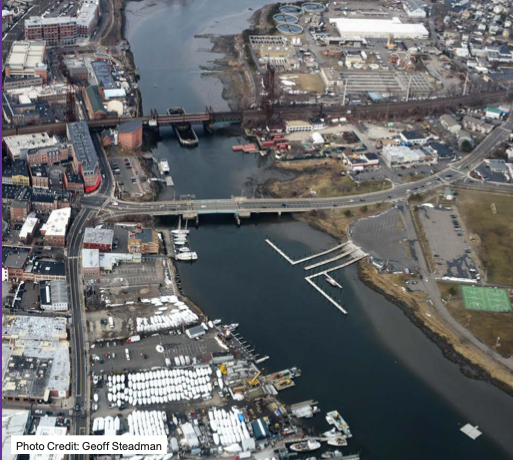 Norwalk recently underwent a study of its industrial zones to take a look at the different types of industrial development in various areas of the city, and how industrial and commercial zoning can best be used for economic and job growth.
How can the city become more modernized? How should the city change the industrial zone definition? What should industrial zones look like in Norden Place and along the waterfront?
These are just a few questions examined in the study.
The Norwalk Industrial Zone Study included conversations with city staff, industrial business owners, residents, and other local stakeholders. Below is a quick overview of the study’s recommendations.
Norwalk recently underwent a study of its industrial zones to take a look at the different types of industrial development in various areas of the city, and how industrial and commercial zoning can best be used for economic and job growth.
How can the city become more modernized? How should the city change the industrial zone definition? What should industrial zones look like in Norden Place and along the waterfront?
These are just a few questions examined in the study.
The Norwalk Industrial Zone Study included conversations with city staff, industrial business owners, residents, and other local stakeholders. Below is a quick overview of the study’s recommendations.
Simplify Zoning Classifications for Modern Uses
Industry in Norwalk has evolved over the years. Commercial zones previously developed for agriculture and manufacturing need modernization. Yet, the city still needs to make room to attract construction projects and other heavy industrial works.
One recommendation of the Industrial Zone Study is to simplify zone classifications to make them more in line with contemporary uses. This would distinguish each zone class by the type of industrial uses allowed, the types of contractors permitted, and whether or not residential uses in the zones are permitted.
There are four proposed industrial categories for the zoning districts:
- Heavy Industrial - this include intensive manufacturing, contractor yards, utilities and waste management
- Mixed-use Heavy Industrial/Commercial - this includes heavy industry but also allows commercial upper floor uses such as offices, research and development, showrooms, and other industrial services.
- Mixed-use Light Industrial/Commercial - this would include light manufacturing uses, as well as research and development, limited warehousing, and other less intensive industrial services.
- Mixed-use Artisan - these zones would allow boutique manufacturing, textile companies, bakeries, beverage and spirits production, and artist studios.
Special Development Plan for Norden Place
Norden Place is a unique area because of its industrial history and location. The site takes up more than three dozen acres in Norwalk and is an ideal location for an industrial zone. However, there are specific challenges that need to be addressed when planning for its future use. For one, it is adjacent to I-95, yet drivers must go through residential areas to access the highway.
The study recommends preparing a development plan just for the Norden site. While a warehousing center for Norden Place may not be ideal, mixed commercial/industrial users should be able to make use of the location. Potential uses might include research and development, life science and biotech companies, or a data center. Importantly, they should discourage residential uses.
Along with the planning for Norden Place, the city should examine and devise a plan for access to I-95. It may be possible to open additional ramps to the highway, though it’s important to bear in mind the effects of these construction projects on city residents. One solution could be including buffering strategies to minimize noise pollution along the highway. They may also want to restrict vehicular traffic in the zone to passenger vehicles and small trucks only.
Differentiate Between Contractor Yards and Others
While contractor yards are permitted in industrial zones, contractors can include a large array of service providers from plumbers and electricians to site contractors and sand/gravel storage facilities. The sweeping term ignores the realities that each industry has its own needs and in zones with more intensive contractor yards and heavy industry conflicts can arise when they are intermingled with residential uses.
The study proposes that the city should distinguish between contractor yards with heavy truck traffic and impact on the site, and contractor offices that have only a few service vehicles and less effect on its surroundings. Distinctions should also be drawn between contractor operations with outdoor vs. indoor storage.
Some other requirements suggested for zoning regulations for contractor yards include:
- Locating them in accessible locations that will not cause traffic problem
- Adding buffers adjacent to these yards and access to major roadways
An additional recommendation of the Norwalk Zoning Study is limiting self-storage facilities, which are presently under a moratorium in the industrial zones. The reason for this is that self-storage takes up valuable industrial land, but is not the best use of the property. These facilities provide limited jobs and economic development potential, and don’t promote an active pedestrian environment on the ground floor such as retail or restaurants, which add to the vitality of the neighborhood.
Develop a Unique Waterfront Plan
Historically, Norwalk has had industrial zones along the Norwalk River, but this waterfront is a unique area with many uses, regulations, and other pressures. The plan suggests that the city should take into consideration the many other issues that affect the land use along the waterfront, including the environmental impact, water quality, coastal resiliency, public access, recreational uses, as well as economic development opportunities related to the water.
In fact, the city has already begun to develop an Industrial Waterfront Land Use Plan to determine the best use of its waterfront, taking into account the many diverse challenges.
How Norwalk Industrial Zones Can Improve
Norwalk industrial zones can become more effective for today’s economy. By differentiating between different kinds of industry and creating new classifications the city can accommodate a larger variety of businesses and more mixed-use buildings.
Norden Place and the waterfront are two industrially zoned areas that are unique and should be studied, planned, and developed separately.
By taking steps outlined in the Industrial Zone Study, Norwalk is planning for the future. A future that encourages economic development balanced with residents’ needs and the environment.
Putting the “Walk” in Norwalk: Best Local Trails to Discover
 The benefits of walking have been known for a long time. Whether to improve your health, stay in shape, enjoy the fresh air, or take advantage of your natural surroundings, walking is a great way to spend leisure time. Norwalk, CT has many beautiful places to walk, whether you’re looking for natural beauty or interested in more urban, historic sites.
The benefits of walking have been known for a long time. Whether to improve your health, stay in shape, enjoy the fresh air, or take advantage of your natural surroundings, walking is a great way to spend leisure time. Norwalk, CT has many beautiful places to walk, whether you’re looking for natural beauty or interested in more urban, historic sites.
Trails for Nature Walks
Whether you’re an experienced hiker or just looking to get your heart rate up and get in touch with nature, there are plenty of green, open spaces to enjoy.
Cranbury Park is a 227 acre park that offers several wooded trails plus a gorgeous view of the historic Gallaher Mansion. This picturesque setting makes it not only the perfect place to relax and enjoy the outdoors, but the 1.5 mile trail that runs along the river is perfect for walkers and their furry friends! Dog-friendly and absolutely stunning, make plans to visit Cranbury Park to see for yourself.
An alternative with better views of the water, another bike and pedestrian-friendly trail to consider is Norwalk’s Harbor Loop Trail. An easy, moderately trafficked trek, you can always find back trails for a little more privacy. Dogs are welcome but must be kept on a leash.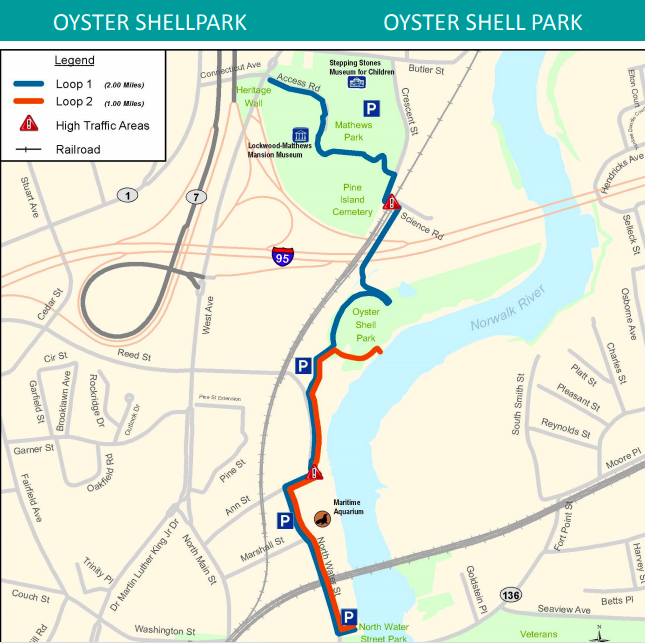 Oyster Shell Park can be found near the Maritime Aquarium, but don’t let it’s urban setting fool you, this park gives you a view of the Norwalk Harbor and the Norwalk River. There’s a small parking lot, a fishing pier, and for walkers, there are several paved trails for a breazy, waterside stroll.
For a scenic, oceanside option, there’s a 1.5 mile loop from Shady Beach to Calf Pasture that takes you out on the peninsula so you can really breathe in that saltwater air. With a stop by the Norwalk World War I Memorial and several restrooms along the way, there are plenty of opportunities to take in the sites or take a rest stop. Experience the beauty of the Long Island Sound on this easy walk.
Sharing a start point at Calf Pasture Beach, the Norwalk River Valley Trail crosses Wilton, Ridgefield, and Redding—all the way to Rogers Park in Danbury. It’s an out and back trail through the Connecticut woods, featuring a ten foot wide, multi-use path that when fully completed will go on for 30 miles.
Oyster Shell Park can be found near the Maritime Aquarium, but don’t let it’s urban setting fool you, this park gives you a view of the Norwalk Harbor and the Norwalk River. There’s a small parking lot, a fishing pier, and for walkers, there are several paved trails for a breazy, waterside stroll.
For a scenic, oceanside option, there’s a 1.5 mile loop from Shady Beach to Calf Pasture that takes you out on the peninsula so you can really breathe in that saltwater air. With a stop by the Norwalk World War I Memorial and several restrooms along the way, there are plenty of opportunities to take in the sites or take a rest stop. Experience the beauty of the Long Island Sound on this easy walk.
Sharing a start point at Calf Pasture Beach, the Norwalk River Valley Trail crosses Wilton, Ridgefield, and Redding—all the way to Rogers Park in Danbury. It’s an out and back trail through the Connecticut woods, featuring a ten foot wide, multi-use path that when fully completed will go on for 30 miles.
Discover Norwalk’s Downtown
To learn more about the downtown areas of Norwalk, CT and get some exercise, Discover Norwalk has put together a number of self-guided walking tours that bring you face-to-face with some of the city’s history. On these tours, you’ll discover Norwalk’s legacy of art, heritage, and culture, passing by landmarks such as City Hall, Mill Hill, Freese Park and the Norwalk Public Library.
Another great resource for walkers was developed by the Norwalk Health Department. As part of their NorWALKer Program to encourage residents to be physically active, they developed a series of NorWALKer maps with more than 40 routes through 17 city neighborhoods.
No matter if you’re walking to improve or maintain your health, boost your mood, or learn about your town, Norwalk residents have plenty of options to choose from when it comes to walking trails and routes. So get out there and enjoy!
New Historic District Recognized in Norwalk, CT
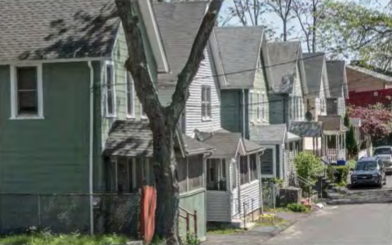 An 84-acre area around the South Norwalk train station in Norwalk, CT, traditionally known as Springwood and Whistleville, has been officially added to the National Register of Historic Places (U.S. National Park Service).
An 84-acre area around the South Norwalk train station in Norwalk, CT, traditionally known as Springwood and Whistleville, has been officially added to the National Register of Historic Places (U.S. National Park Service).
Whistleville History
The neighborhood along Lexington and Ely Avenues was nicknamed “Whistleville” because of the sounds of approaching train whistles. The South Norwalk train station area has been a busy commercial center since Norwalk became a stop on the New York to New Haven line in the mid-1800s. The neighborhoods around the station were largely made up of immigrants, mainly from Hungary and Italy, who worked in Norwalk’s factories. Through the early 1900s, Norwalk, Connecticut had a thriving textile industry, producing hats, corsets, and shirts, in addition to manufacturing locks. It was also the largest producer of oysters in the country. This commerce was fueled by the railroad.
Benefits of a National Historic District Designation
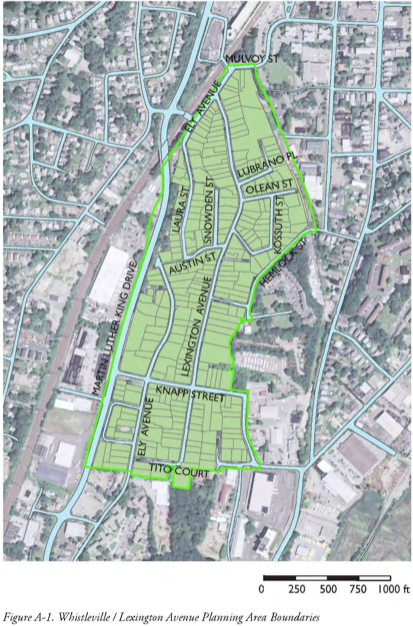 The main objective of designating “Whistleville” as a National Historic District is to
The main objective of designating “Whistleville” as a National Historic District is to preserve the historic character and buildings of the area by supporting and encouraging renovations and rehabilitation, as well as to enhance the quality of life for residents and businesses. Once an area is an official historic district, property owners are eligible for tax incentives and financial assistance programs from the State and the Norwalk Redevelopment Agency to help finance historic preservation projects and property improvements.
Almost all the streets in the district include wood-framed, single family homes built in the late 19th and early 20th centuries, most built between 1880 and 1920. Some of the architectural styles found among them are Gable-front Vernacular, Wing Vernacular, Queen Ann, Italianate, and Colonial Revival styles. The exception is a commercial section along Ely Avenue with three-story brick commercial buildings from the same era. There are also two churches, one in the Gothic Revival style and one in the Romanesque style.
Whistleville joins several other districts in Norwalk, CT on the National Register including South Norwalk (SoNo), Wall Street, Five Mile River Landing, and the Norwalk Green.
Norwalk Social Media App Gets Reboot
[repost from
The Hour]

A Norwalk company has lined up $25 million in backing, after more than 4.5 million people downloaded its app that shares ad revenue with social media “influencers” and artists who use it to post videos, photos and other content.
Display Social is a reboot of a social media startup called Tsu, which underwent a bankruptcy in 2016 only two years after its formation, even as celebrities like Rihanna, Justin Timberlake and William Shatner tried out the platform.
Climate Change in Connecticut and in Norwalk, CT
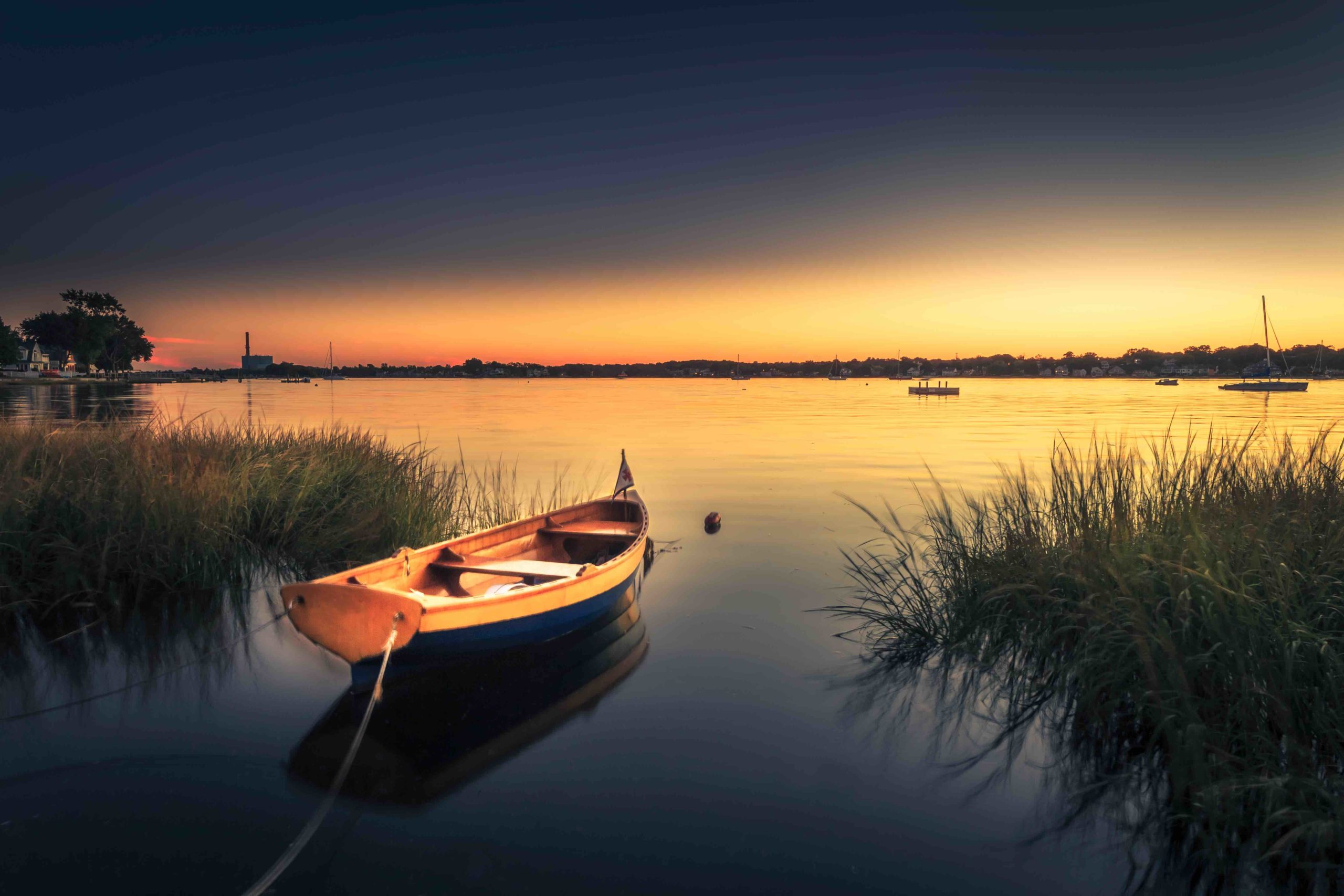 Did you know that the 2010s were the hottest decade ever recorded in the Earth’s history? Climate change isn’t a potential issue that we may have to deal with in the future. It’s a real problem, with global impacts that are already being seen today. Even if we can’t see the ice caps melting here in Connecticut, it’s an undeniable fact that the climate is changing our environment.
To prepare for the challenges ahead, it’s good to educate yourself on the current and future impacts of climate change in CT, and the strategies the government will put in place to solve these issues. The Connecticut climate and geography are already changing. Here are some examples provided by the University of Connecticut’s Adapt CT:
Did you know that the 2010s were the hottest decade ever recorded in the Earth’s history? Climate change isn’t a potential issue that we may have to deal with in the future. It’s a real problem, with global impacts that are already being seen today. Even if we can’t see the ice caps melting here in Connecticut, it’s an undeniable fact that the climate is changing our environment.
To prepare for the challenges ahead, it’s good to educate yourself on the current and future impacts of climate change in CT, and the strategies the government will put in place to solve these issues. The Connecticut climate and geography are already changing. Here are some examples provided by the University of Connecticut’s Adapt CT:
Impacts of Climate Change in CT
Rising Temperatures
All over the globe, temperatures are rising. If you live in the Northeast U.S. you may notice that the Connecticut climate in summer is growing hotter and longer every year. There are more ninety-degree days than ever before producing more heatwaves and droughts.
Vector-Borne Illness
People know Connecticut for the large numbers of ticks in its forests and tall grasses. In fact, Lyme disease was named after the town of Lyme, Connecticut. Warmer temperatures bring more ticks and the increased spread of pathogens.
Air Pollution
The potential for poor air quality also rises when the days are hotter. Poor air quality leads to health issues, aggravating asthma and other respiratory conditions. It can also affect the heart and cardiovascular system.
Flooding
As a coastal state, flooding is a large issue for Connecticut when it comes to climate change. Coastal marshes are flooding and drowning, which destroys crucial ecosystems, and homeowners are seeing rising flood insurance rates. Connecticut also faces an increase in precipitation. Climate change causes more intense storms, which means that a lot of rain falls from the sky all at once. That can quickly lead to flood conditions.
Sea Level Rise
Coastal flooding can also be exacerbated by the impacts of sea level rise. Being a coastal community, Norwalk may be particularly impacted should the worst-case scenarios come to fruition. This could mean properties permanently or partially underwater, roads potentially underwater and infrastructure impacted. For further information on sea level rise impacts please see Chapter 9 of the Citywide Plan.
Water Pollution
Pollution from fossil fuel emissions and rainwater runoff hurts many rivers and bodies of water. These bodies of water include the Long Island Sound, and here in Norwalk, Norwalk Harbor, and the Norwalk River.Polluted runoff can negatively impact water-based economies such as shellfishing and recreation.
Solutions to Climate Change in CT and Norwalk
The state of Connecticut and city governments are working on solutions to both mitigate the effects of climate change, or make adaptations. Here are some examples of climate actions and plans:
Renewable Energy
The state government has dedicated itself to the decrease of fossil fuel emissions by promoting renewable energy sources. The Global Warming Solutions Act sets targets to reduce emissions by 80% from 2001 levels by 2050.
In Connecticut, the transportation sector gives off the largest percentage of greenhouse gas emissions. As part of the state’s effort to reduce greenhouse gasses, the EVConnecticut program is funding the creation and set-up of electric car charging stations throughout the state encouraging residents to buy electric cars.
In Norwalk, EV stations have been set up in a number of municipal parking areas, including the South Norwalk train station and Maritime Garage.
Water and Wetland Protection
In Norwalk, about 22% of residents have private drinking water wells that draw mainly from bedrock aquifers. The Norwalk Aquifer Protection Agency was established in 2009 to regulate businesses located nearby the aquifers to make sure your drinking water isn’t polluted.
The Norwalk Conservation Commission and Inland Wetlands Agency enforces the State and City’s Inland Wetlands and Watercourses Regulations. The Commission has a compliance officer who reviews building permits for wetlands issues.
Another example of water protection is Norwalk’s partnership with Harbor Watch, an environmental organization, to identify, locate, and eliminate illegal discharges into drainage areas, coastal areas and rivers.
Stormwater Management
The city of Norwalk is taking direct action to prevent stormwater from polluting its rivers and flooding its city streets. For example, the Norwalk Harbor Management Commission created a plan to manage stormwater runoff from the Yankee Doodle I-95 bridge.
Additionally, the city is promoting green infrastructure and low impact development as a way to reduce runoff and facilitate on-site infiltration of stormwater. These measures not only reduce pollution of inland and coastal waters, they can play an important role in reducing flooding.
Combating the Causes of Climate Change in CT
Even though we’re already experiencing the effects of climate change and global warming, the state and local governments are working hard to promote actionable solutions. Norwalk is part of Sustainable CT, a voluntary certification program founded by the Connecticut Conference of Municipalities and other partners. Norwalk recently achieved a bronze certification from the group in recognition of the community’s sustainability accomplishments.
To learn more about the changing climate in Norwalk, CT, and how the City is planning for it, see pages 141 - 161 of the 10-year Citywide Plan.
Applications Being Accepted for 2021 Neighborhood Assistance Act Program
 If you're a nonprofit in Norwalk, CT you may be
If you're a nonprofit in Norwalk, CT you may be interested in applying for the Connecticut NeighborhoodAssistance Act Program (NAA).
The Norwalk Redevelopment Agency is handling the application process for tax exempt organizations in Norwalk.
The deadline for applying is 5 p.m. on May 10, 2021.
What is the Neighborhood Assistance Act Program? Read on and we'll fill you in on the details on how it works and how both area businesses and the Norwalk community benefit from this program.
Connecticut Neighborhood Assistance Act Program
The Connecticut Neighborhood Assistance Act program is a tax credit program designed to incentivize businesses to provide funding to support approved municipal and tax-exempt organizations.
Businesses may be eligible for a tax credit of up to 60% of the amount they contribute to one of these organizations. Tax credits may even go as high as 100% of the contribution amounts for certain qualified programs.
How Do Nonprofits Qualify For The Program?
Community programs must be approved by both the municipality in which the programs are conducted and by Connecticut’s Department of Revenue Services. A tax exempt organization interested in participating in the NAA Program must first complete in its entirety the program proposal application, Form NAA-01. This form must be submitted for approval to the municipality where the tax exempt organization’s program is conducted. In Norwalk that is the Norwalk Redevelopment Agency. All approved applications will then be sent to the CT Department of Revenue for another round of reviews.
Organizations that qualify include, but are not limited to:
- Employment and training
- Energy conservation
- Child care services
- Substance abuse
- Neighborhood assistance
What Are The Guidelines For Businesses?
Although the program is available to a wide range of businesses, there are some parameters to be followed to qualify. For one, the annual tax credit is limited to $150,000. There is also a minimum contribution amount of at least $250 to qualify for the program.
The application process for businesses can be done online through the Connecticut Department of Revenue Services website.
NAA Application Process in Norwalk
All tax exempt organizations in Norwalk will follow this process:
- The Norwalk Redevelopment Agency will collect applications and, after a public hearing, will present them to the Norwalk Planning Committee and Common Council for approval. Then the Agency will submit applications approved by the City of Norwalk to the CT Dept. of Revenue Services.
- The Dept. of Revenue Services will post on their website the list of approved applicants for businesses to review as potential community programs to make a contribution towards.
- Businesses wishing to sponsor a community program will have to fill out and submit Form NAA-02 between September 15th and October 1st. No earlier and no later.
- Later in the fall, CT Dept. of Revenue Services will notify municipalities of the applications that received contributions from companies. At that point, municipalities are asked to notify the organizations directly.
Nonprofit applications must be sent via email to koleary@norwalkct.org before 5 p.m. on May 10, 2021.
For more information, or to have any questions answered about the NAA, visit the Department of Revenue Services or call 860-297-5687. Applicants are also welcome to contact Katie O’Leary at the Norwalk Redevelopment Agency at koleary@norwalkct.org.
Planning Cities With People-oriented Design
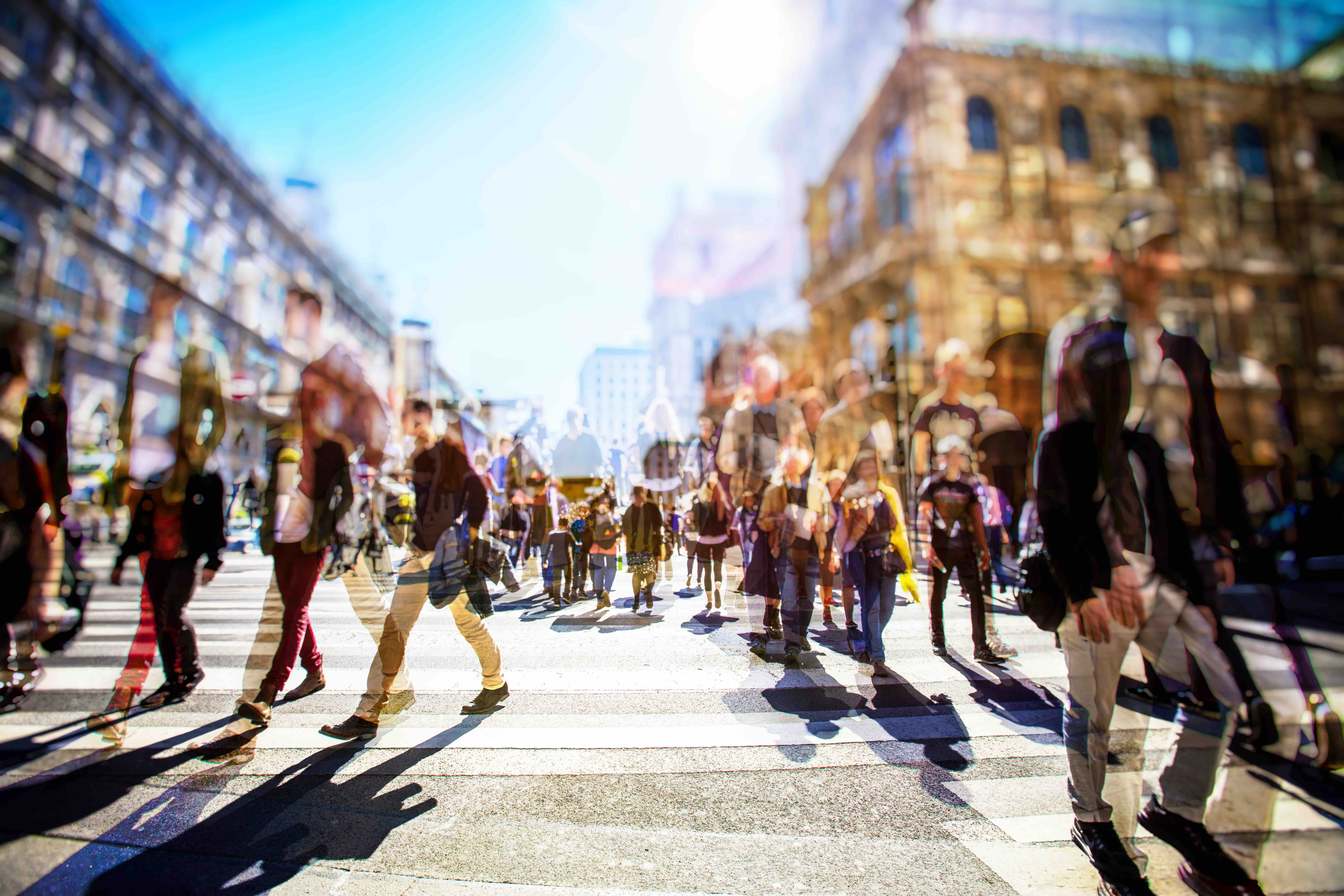 We’ve written about what makes cities livable and what people are looking for in a city. There are various urban planning approaches that put and keep people at the forefront. Designing a city so it is people oriented brings in two subjects we’ve covered, transit-oriented development (TOD) and designing public spaces to make them more bikeable, walkable and encourage community (also known as placemaking). Below we take a closer look at some of the factors that make up people-oriented urban design.
We’ve written about what makes cities livable and what people are looking for in a city. There are various urban planning approaches that put and keep people at the forefront. Designing a city so it is people oriented brings in two subjects we’ve covered, transit-oriented development (TOD) and designing public spaces to make them more bikeable, walkable and encourage community (also known as placemaking). Below we take a closer look at some of the factors that make up people-oriented urban design.
The Problem with Car-Centric Cities
Many cities have been designed or have grown organically to be “car-centric”, meaning they are centered around automobile uses and connectivity. Examples of this can include, large urban blocks, unsafe conditions for bicycling and walking, an emphasis on building roads and highways to make it easier to get into the city, little access or connection to or between public transportation, and few public spaces. Primarily promoting the use of cars can make a city less liveable, adding to traffic congestion, and air pollution - among other problems.
Transit-oriented Development
Transit-oriented development is a type of urban planning that creates compact, pedestrian-oriented, mixed-use (commercial and residential) communities within walking distance of high quality public transit systems. This kind of development incorporates living, working, retail and recreational spaces close together, and in close proximity to transportation systems. It is intrinsically built around the needs of people and neighborhoods. TOD fosters many benefits including increased economic activity, job opportunities, walkability and a sense of community.
Public Transportation
A key component of TOD is good, accessible public transportation that is centered around the needs of residents and visitors. Making trips into and between city neighborhoods easy and making high quality modes of transportation efficient, should be key goals of a city. Ensuring that there are easy connections between various methods of public transportation, making clear up-to-date route information available, and providing dedicated lanes on city streets for public transportation can make public transportation more accessible for City residents and visitors.
Policies to Encourage Less Car Usage
In addition to making it easier and more compelling to take public transportation, cities can reduce the use of cars with a few strategies, as well. One method is congestion pricing, which is charging vehicles a fee for going into specific areas at certain times of the day. Parking restrictions can also be put into place. In terms of design, cities can narrow lanes, add bike lanes as well as add bike-share docking stations, put in more pedestrian crossings, temporarily replace parking spaces with parklets, and even set up car free zones. These strategies don’t take cars away from the equation entirely, but they prioritize people over cars.
Designing Walkable, Bikeable Neighborhoods
We already mentioned some of the ways to make a city more walkable and bikeable such as car-free or car-reduced streets. Other ways to encourage pedestrians can be implemented via sidewalk design strategies. Making sidewalks wider, with no obstructions, makes them easier to walk on and can encourage their use as public spaces. Clear, wide sidewalks can be used for commercial activity, recreational uses, or public art. A city can better accommodate bikers with designated bike lanes that are separated from other vehicle street traffic and parked cars, as well as convenient and secure bike racks in public spaces.
Public Space Management
Public spaces are important to making a city people-friendly. Ensuring residents and visitors access to open public spaces to rest, exercise and congregate is essential for densely populated neighborhoods. The benefits are many, including both physical and mental health, along with fostering a sense of community. ocia Public spaces can be used for people to meet, play, and socialize!
People-oriented city design is all about putting people and communities first, ahead of vehicles, streets, and other city infrastructure. In short, improving overall quality of life. By encouraging and supporting mixed use building, investing in quality public transportation options, making cities more walkable and bikeable, and providing inviting public spaces, cities can improve the quality of life for residents and visitors alike.
Initial Recommendations for Norwalk’s Industrial Zones
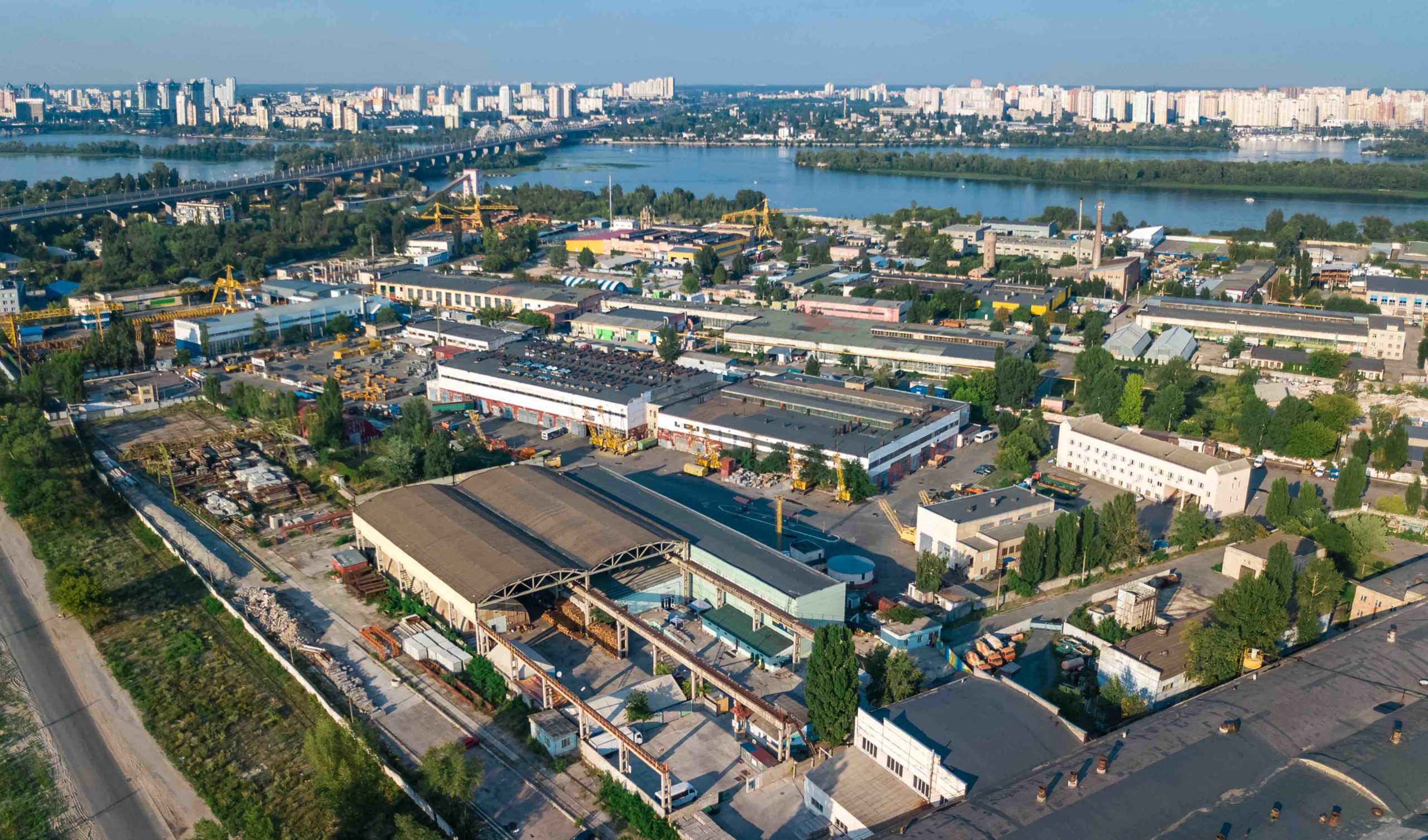 “Industry” in the 21st century has come to have a different meaning than in the last century. For some, 2021-03-10 Steering Committee Meeting - Draft Recommendations (2)industrial zones may conjure up images of belching smoke stacks. But now, the modern industrial zone is something quite different. The manufacturing sector is seen more and more as including a variety of businesses that can be vital to creating vibrant local neighborhoods, offering a range of benefits from creative placemaking to employment opportunities.
“Industry” in the 21st century has come to have a different meaning than in the last century. For some, 2021-03-10 Steering Committee Meeting - Draft Recommendations (2)industrial zones may conjure up images of belching smoke stacks. But now, the modern industrial zone is something quite different. The manufacturing sector is seen more and more as including a variety of businesses that can be vital to creating vibrant local neighborhoods, offering a range of benefits from creative placemaking to employment opportunities.
The Changing Face of Industry
In many ways the new image of industry stems from the fact that manufacturing firms have changed radically over time. Across the United States, we are moving from a manufacturing sector dominated by mass producers with hundreds of employees to small and medium-sized businesses that are celebrated for keeping it local. Because of this, cities are redefining what industrial usage is as they take a look at their industrial zones.
Today, not all industrial uses are the same. They can be small-scale, less intensive uses such as small-batch manufacturing, woodworking, metalworking, machining, product design, printing, apparel and textiles, brewery and bakeries. Industrial uses can also include “light industries” including smaller-scale R&D, industrial services, distribution, building materials sale & storage and warehousing. Heavy industrial uses may include vehicle sale/service, storage/junkyards, asphalt and concrete plants, industrial processing, oil/petroleum/propane gas storage, solid waste transfer, recycling and composting.
Zones In Norwalk
Norwalk has three defined industrial zones: industrial 1, industrial 2 and restricted industrial. In addition, industrial uses are also allowed in certain other business zones. The kinds of activities that are allowed in these zones include manufacturing and processing, research and development, printing, warehousing, storage and wholesale distribution. These zones also allow for other uses that are not industrial, but accompany industrial uses such as offices and retail, artist workspaces, and even multifamily and single family housing.
Norwalk is setting out to reclassify and simplify its industrial zones. Recently, the committee studying this, presented the following recommendations:
- Simplify zoning into three new types of zones:
- Industrial
- Mixed Use Commercial/Industrial
- Mixed Use Residential/Commercial/Industrial
- In the Mixed Use Residential/Commercial/Industrial district, encourage ground floor boutique manufacturing and live/work spaces by allowing building height increases. For example, in neighborhoods such as the East Norwalk or Wall and West Avenue areas, the City could look to create incentives for light industry such as allowing property owners to maintain and grow businesses while allowing for residential spaces above them.
- In the Mixed Use Commercial/Industrial Zones, allow for hybrid building types such as in South Norwalk along Martin Luther King Jr. Boulevard, Wilson and Woodward Avenues or North Norwalk along Perry Avenue.
- Distinguish the difference between the types and intensity of contractor yards from each other and from other industrial uses and identify more suitable locations and sites. Contractor yards pose problems when they are located along narrow residential streets or when they are near road networks and intersections which can cause conflict with their truck traffic. Currently, contractor yards are permitted by right in Norwalk in industrial zones in South and East Norwalk, but they are also permitted by special permit in other business zones in the City.
- Develop separate plans for the Norden site and the waterfront. The Norden Site is a large parcel (37 acres) but truck traffic now must move to and from the site through roads with no direct access to I-95. The committee’s recommendations are that this site should be considered for other suitable land uses such as industrial/commercial with passenger traffic only. Industrial uses around waterfront areas should promote access to the waterfront and be in compliance with and under the guidance of the City’s Harbor Management Plan.
The Industrial Zone Planning Committee will continue to refine its recommendations as it moves ahead, following up with the City’s industrial businesses, and with input and feedback from the public via public outreach sessions being scheduled for late April, 2021.
Surveying Norwalkers on Industrial Zones
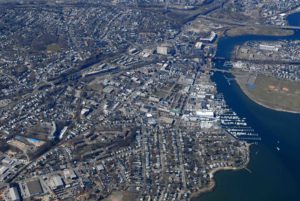 Industrial zones have been integral parts of cities for decades, allowing certain areas to be designated for industrial and commercial use. Following the 2019-2029 Citywide Plan, Norwalk is assessing its industrial zones to see if these areas are still appropriate for industrial uses, as well as taking a look at how to better use these zones for economic diversification and growth. As part of this effort, the City recently conducted a survey for stakeholders across the City, including residents and business owners, to gauge their opinions about Norwalk’s industrial zones.
Industrial zones have been integral parts of cities for decades, allowing certain areas to be designated for industrial and commercial use. Following the 2019-2029 Citywide Plan, Norwalk is assessing its industrial zones to see if these areas are still appropriate for industrial uses, as well as taking a look at how to better use these zones for economic diversification and growth. As part of this effort, the City recently conducted a survey for stakeholders across the City, including residents and business owners, to gauge their opinions about Norwalk’s industrial zones.
Industrial Zone Survey Results
Out of a total of 434 respondents, two major opinion groups emerged, based on their votes and statements submitted.
One group of about one-third of those who responded had generally a pro-industry stance, with strong support for additional industrial development across the City, as well as a healthy mix of both commercial and industrial uses. Their opinions were generally:
- More supportive of industrial growth, especially for job creation
- Support for a balance of land use
- Sensitive to the location of industrial uses and their relationship to residential neighborhoods
A second group, representing about two-thirds of participants, had more of an anti-industry attitude. Many in this group expressed a desire to see industry be placed elsewhere in Fairfield County, and many pointed to the noise and harm that industry causes to residential neighbors. Their opinions included:
- Less support for industrial growth
- Norwalk should not bear the regional burden of industrial development
- Industry in Norwalk is not well located and should not be near residential areas
Despite the gap in opinions on industrial zones in general, there were areas of consensus across both of the groups. Whether pro-industry or anti-industry, there was wide agreement on:
- Industry should respect the needs of its residential neighbors
- Traffic and infrastructure are serious issues in many of the zones
- There should be a clear distinction between heavy and light industry
- Waterfront is a valuable asset for the City that should be considered separately from the other industrial zones
Industrial Zone Planning - Next Steps
Based on both the survey results and the above consensus points, the industrial zone planning team will look further into several questions that arose, including:
- While Norwalk is well positioned for a regional advantage with regard to industry, should it be the main industrial district for Fairfield County?
- What are emerging industrial trends and how should they inform the future of industrial development in Norwalk?
- How to balance the future of marine industrial and commercial uses with recreational uses such as boating and public access along the waterfront?
- How can Norwalk’s planning and policy mitigate conflicts between industrial uses and abutting residential and commercial areas?
With these in mind, the committee will undergo further planning analysis to develop urban design scenarios related to the various zones.
Read more about Norwalk's Industrial Zone Planning Effort
 A beautiful city located on the Long Island Sound, Norwalk, CT has several photo worthy, waterfront destinations like the Maritime Aquarium or Calf Pasture Beach. These are great area attractions and unique spaces, but there are other waterfront areas, notably along the Norwalk River, that have historically been used for industry and other commercial purposes.
Norwalk is undergoing an assessment of the use of Norwalk’s industrial waterfront to determine what may be in store for the area. Read on to learn more.
A beautiful city located on the Long Island Sound, Norwalk, CT has several photo worthy, waterfront destinations like the Maritime Aquarium or Calf Pasture Beach. These are great area attractions and unique spaces, but there are other waterfront areas, notably along the Norwalk River, that have historically been used for industry and other commercial purposes.
Norwalk is undergoing an assessment of the use of Norwalk’s industrial waterfront to determine what may be in store for the area. Read on to learn more.


 Norwalk recently underwent a study of its industrial zones to take a look at the different types of industrial development in various areas of the city, and how industrial and commercial zoning can best be used for economic and job growth.
Norwalk recently underwent a study of its industrial zones to take a look at the different types of industrial development in various areas of the city, and how industrial and commercial zoning can best be used for economic and job growth.  The benefits of walking have been known for a long time. Whether to improve your health, stay in shape, enjoy the fresh air, or take advantage of your natural surroundings, walking is a great way to spend leisure time.
The benefits of walking have been known for a long time. Whether to improve your health, stay in shape, enjoy the fresh air, or take advantage of your natural surroundings, walking is a great way to spend leisure time. 
 An 84-acre area around the South Norwalk train station in Norwalk, CT, traditionally known as Springwood and Whistleville, has been officially added to the
An 84-acre area around the South Norwalk train station in Norwalk, CT, traditionally known as Springwood and Whistleville, has been officially added to the 
 A Norwalk company has lined up $25 million in backing, after more than 4.5 million people downloaded its app that shares ad revenue with social media “influencers” and artists who use it to post videos, photos and other content.
Display Social is a reboot of a social media startup called Tsu, which underwent a bankruptcy in 2016 only two years after its formation, even as celebrities like Rihanna, Justin Timberlake and William Shatner tried out the platform.
A Norwalk company has lined up $25 million in backing, after more than 4.5 million people downloaded its app that shares ad revenue with social media “influencers” and artists who use it to post videos, photos and other content.
Display Social is a reboot of a social media startup called Tsu, which underwent a bankruptcy in 2016 only two years after its formation, even as celebrities like Rihanna, Justin Timberlake and William Shatner tried out the platform.
 Did you know that the 2010s were the hottest decade ever recorded in the Earth’s history? Climate change isn’t a potential issue that we may have to deal with in the future. It’s a real problem, with global impacts that are already being seen today. Even if we can’t see the ice caps melting here in Connecticut, it’s an undeniable fact that the climate is changing our environment.
Did you know that the 2010s were the hottest decade ever recorded in the Earth’s history? Climate change isn’t a potential issue that we may have to deal with in the future. It’s a real problem, with global impacts that are already being seen today. Even if we can’t see the ice caps melting here in Connecticut, it’s an undeniable fact that the climate is changing our environment.
 We’ve written about what makes cities livable and
We’ve written about what makes cities livable and 
 Industrial zones have been integral parts of cities for decades, allowing certain areas to be designated for industrial and commercial use. Following the
Industrial zones have been integral parts of cities for decades, allowing certain areas to be designated for industrial and commercial use. Following the 

